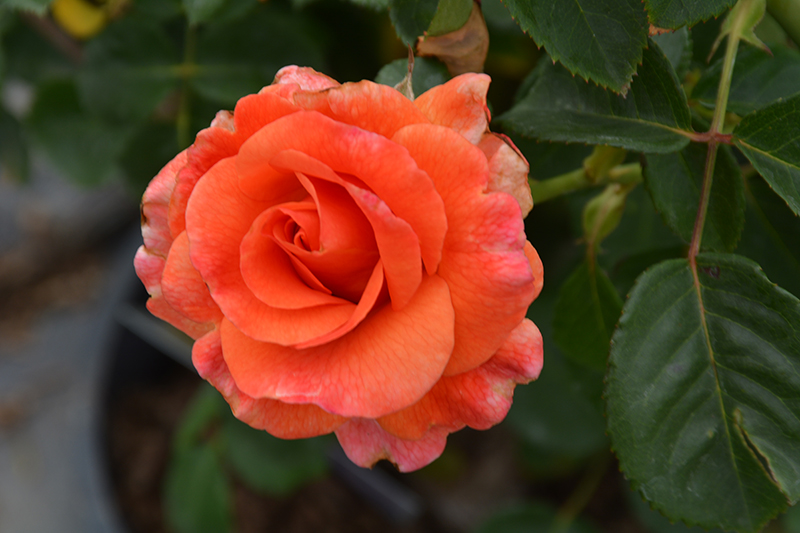>> Home
Height: 5 feet
Spread: 4 feet
Sunlight:
![]()
Hardiness Zone: 5
Group/Class: Floribunda Rose
Description:
This elegant variety is very unique with its orangey-apricot flower color and ruffled and scalloped petals; the flower color contrasts well against the glossy deep green abundant foliage; a rounded bushy habit and lovely fragrance makes this a winner
Ornamental Features
Easy Does It Rose features showy lightly-scented fully double creamy white flowers with peach overtones and salmon centers at the ends of the branches from late spring to early fall. The flowers are excellent for cutting. It has dark green deciduous foliage which emerges dark red in spring. The glossy oval compound leaves do not develop any appreciable fall color.
Landscape Attributes
Easy Does It Rose is a multi-stemmed deciduous shrub with an upright spreading habit of growth. Its average texture blends into the landscape, but can be balanced by one or two finer or coarser trees or shrubs for an effective composition.
This shrub will require occasional maintenance and upkeep, and is best pruned in late winter once the threat of extreme cold has passed. It is a good choice for attracting bees to your yard. Gardeners should be aware of the following characteristic(s) that may warrant special consideration;
- Insects
- Disease
Easy Does It Rose is recommended for the following landscape applications;
- Accent
- Mass Planting
- Hedges/Screening
- General Garden Use
Planting & Growing
Easy Does It Rose will grow to be about 5 feet tall at maturity, with a spread of 4 feet. It tends to fill out right to the ground and therefore doesn't necessarily require facer plants in front, and is suitable for planting under power lines. It grows at a fast rate, and under ideal conditions can be expected to live for approximately 30 years.
This shrub should only be grown in full sunlight. It does best in average to evenly moist conditions, but will not tolerate standing water. It may require supplemental watering during periods of drought or extended heat. It is not particular as to soil type or pH. It is highly tolerant of urban pollution and will even thrive in inner city environments. This particular variety is an interspecific hybrid.

